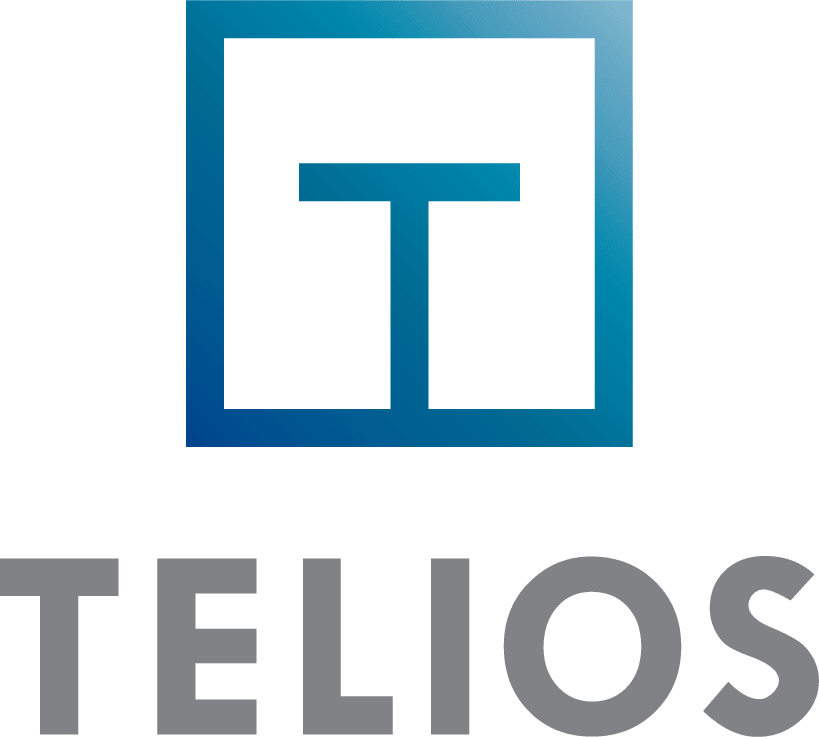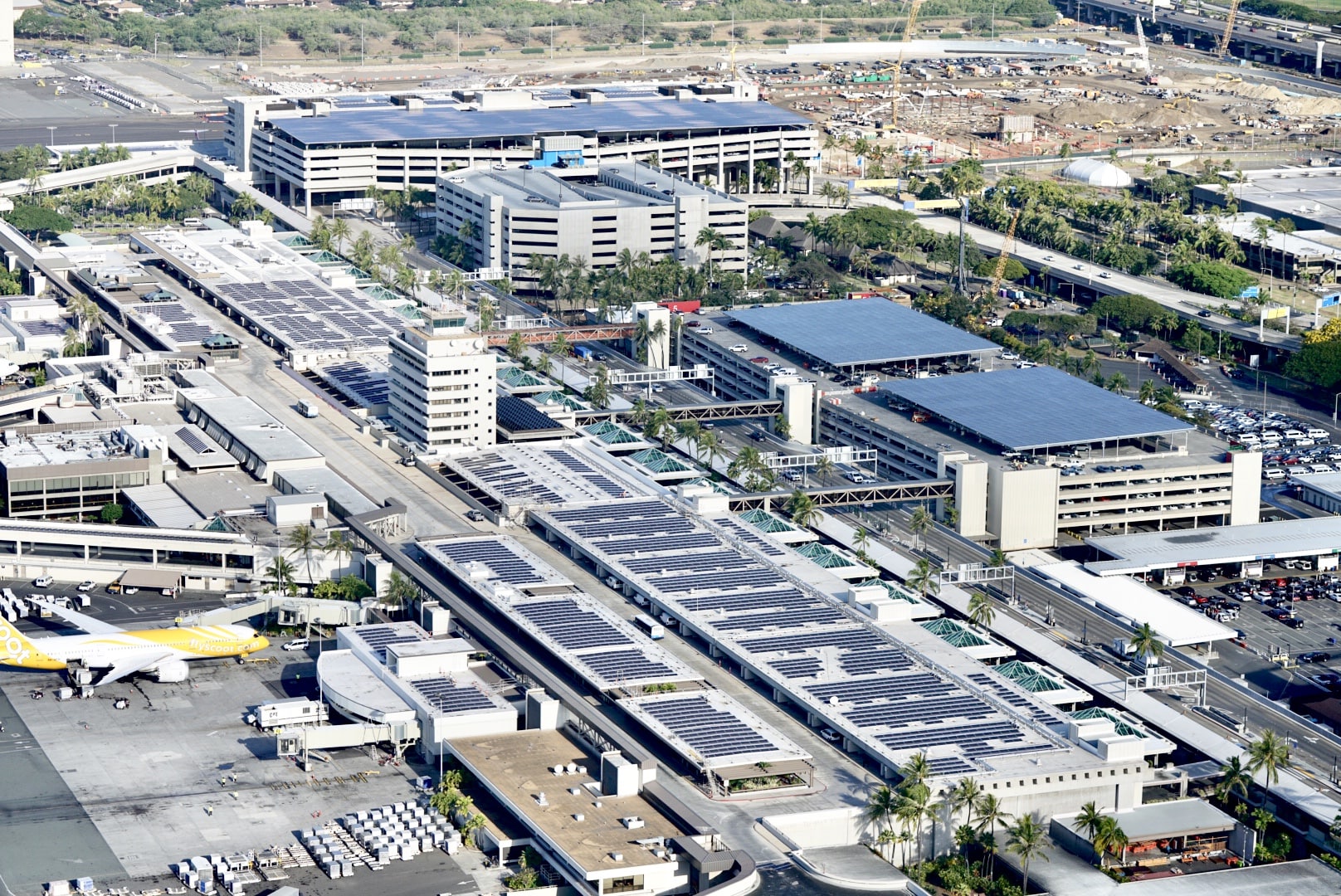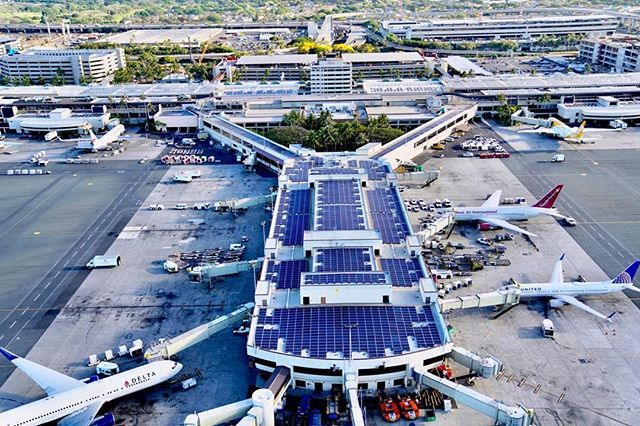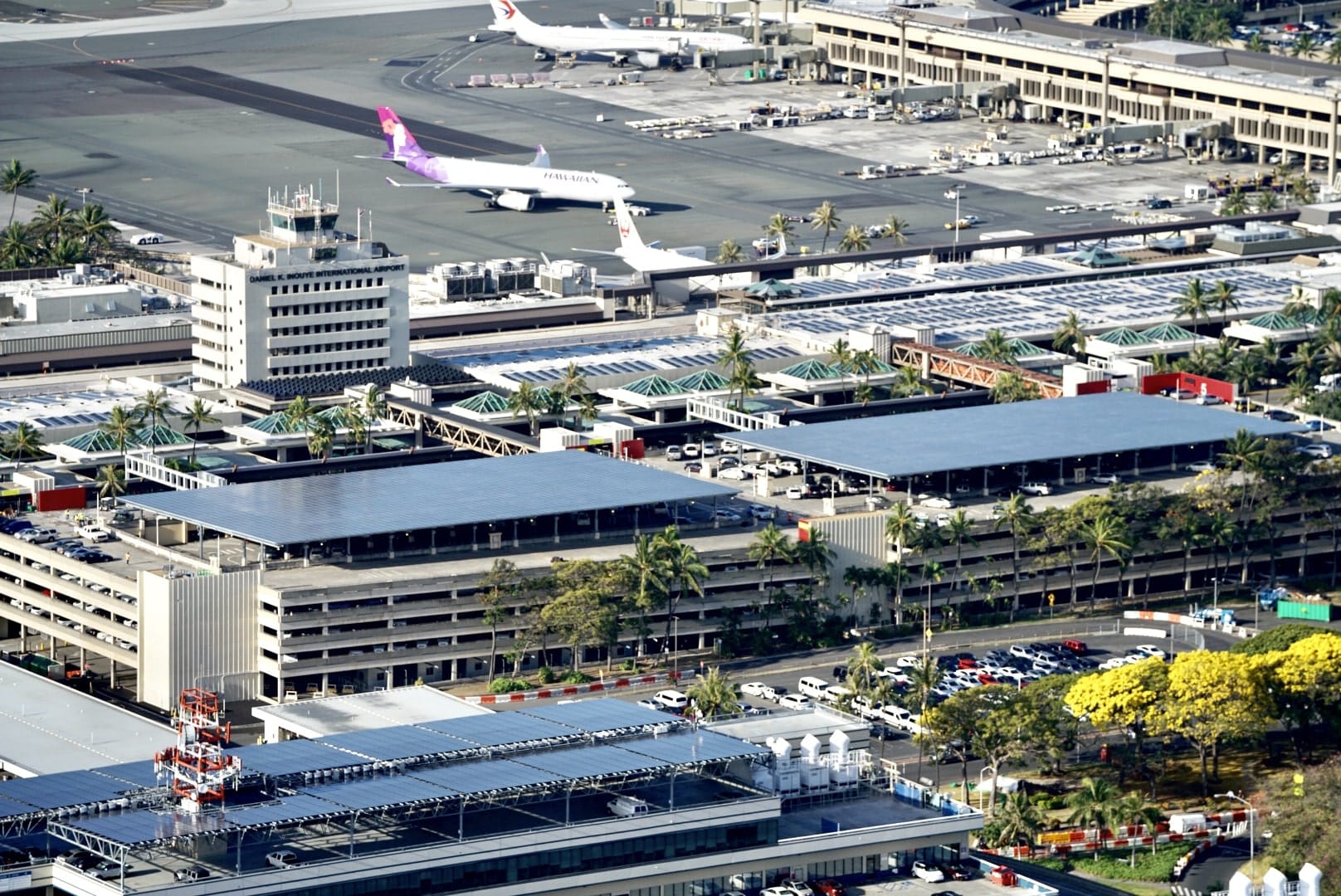This was the second phase of a three-phase project in which HIDOT sought to add additional PV capacity totaling 5.33 MWdc to existing parking garages and terminal roofs. The PV expansion occurred in three geographic areas on the airport campus: two parking garage canopies (totaling 3.4 MW) and nine terminal roofs (totaling 1.93 MW).
The airport is fed by HECO’s 12.47 kV distribution system through several metering points using 12.47 kV-to-480 V unit substations. The substations are distributed across the campus, nearly a quarter mile apart in some cases. The PV was to be a non-export system, so the generation capacity and tie-in scheme were designed to match the total load served by each unit substation. This entailed designing a tie-in and non-export metering scheme at eight (8) existing switchboards, each of various make and vintage. The existing electrical distribution and non-export requirement created several technical challenges, including breaker and custom bus modifications, re-wiring existing relays, coordinating complex feeder routes, and designing a manual transfer scheme to allow one of the PV systems to feed into either of two switchboards serving the airport’s primary chilled water system.
Telios applied an extremely hands-on approach in order to meet the technical demands. The project engineers spent several days investigating the existing site conditions to optimize the design and interconnection scheme. This entailed gaining access to secure areas, investigating existing pipe chases and above-ceiling conditions, and working with the installing electrician to open and inspect live 12.47 kV and 480 V switchgear and transformer taps (Telios engineers are NFPA-70E trained).
Telios provided all electrical engineering, including DC and AC power systems, equipment selection, detailing existing switchgear modifications, metering wiring diagrams, and feeder routing. The customer was not able to provide complete architectural drawings; therefore, Telios developed as-built drawings to facilitate the electrical design and installation. Telios was the engineer of record for all electrical and SCADA systems, producing all drawings and specifications.
This project continues to be one of Telios’ most technically challenging, yet remarkably successful solar projects to date.






